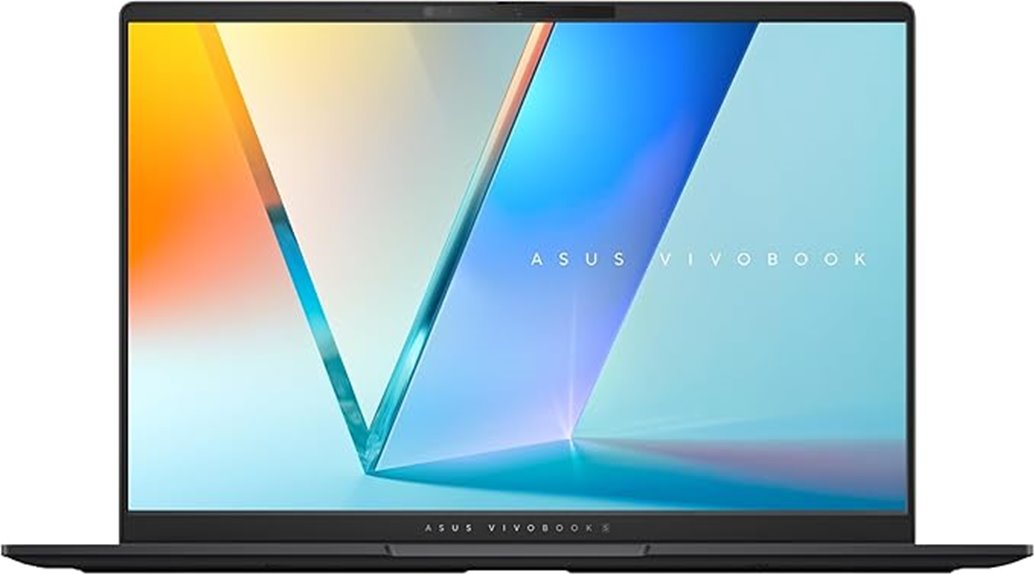Best Laptop for Programming Student (Top 5 Picks for 2025)
When choosing the best laptop for your programming studies, consider options like the Apple 2024 MacBook Pro with the M4 chip, Acer Swift X 14, and the 2025 MacBook Air. Look for models with at least 16GB of memory, dedicated GPUs, and high-speed SSDs. A good battery life of at least 8 hours and lightweight design make a difference for portability. Stick around, and you’ll discover more amazing choices tailored for your coding success!
In the interest of full disclosure, we would like to inform you that some links on our website are affiliate links. By clicking on these links and completing a purchase from our partners, we may receive a nominal commission at no extra cost to you. Rest assured, our affiliate partnerships do not compromise the integrity of our editorial content or product evaluations. For further clarification, kindly refer to our comprehensive affiliate disclosure.
Table of Contents
What Are the Best Laptop for Programming Student to Buy This Year?
Here are my top picks for the Best Laptop for Programming Student, you can consider this year.
Apple MacBook Pro Laptop with M4 chip
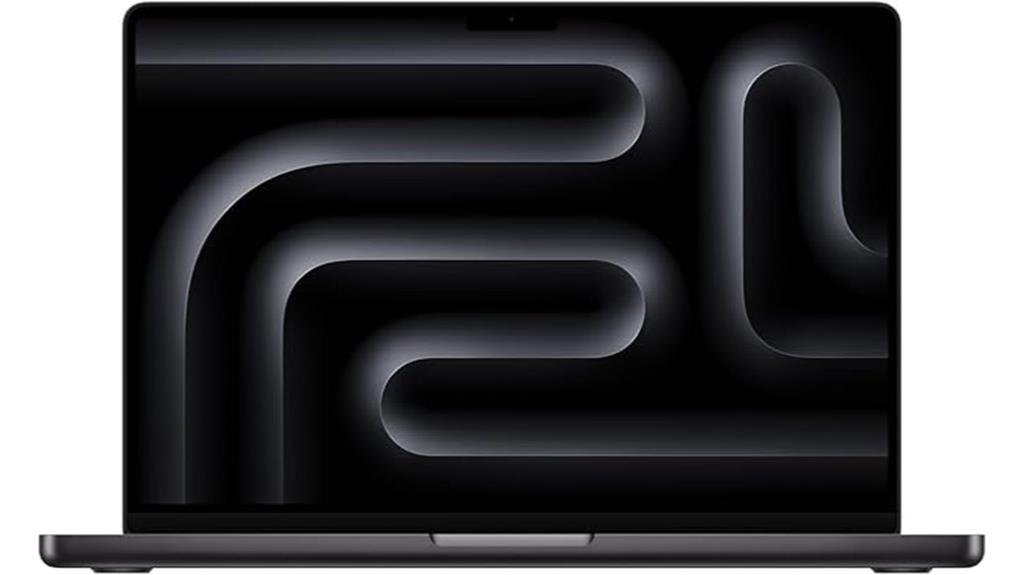
If you’re a programming student seeking a powerful and efficient laptop, the Apple 2024 MacBook Pro with the M4 chip is a standout choice. Its 10-core CPU and GPU deliver exceptional speed, making multitasking and running demanding apps a breeze. The 14.2-inch Liquid Retina XDR display, boasting 1600 nits peak brightness, ensures your coding sessions are visually stunning. With 16GB of unified memory and 512GB SSD storage, you’ll have plenty of space and speed for your projects. Plus, all-day battery life means you can code without interruptions, whether you’re plugged in or on the go.
Best For: Programming students seeking a powerful and efficient laptop for coding and multitasking.
Pros:
- Exceptional Performance: The 10-core M4 chip provides outstanding speed for running demanding applications.
- Stunning Display: The 14.2-inch Liquid Retina XDR display offers impressive brightness and contrast for an enhanced visual experience.
- All-Day Battery Life: Enjoy uninterrupted coding sessions whether you’re plugged in or on the go.
Cons:
- Higher Price Point: The MacBook Pro may be more expensive compared to other laptops with similar specs.
- Limited Upgrade Options: The unified memory and storage may not be upgradable after purchase.
- Fewer Gaming Options: While great for productivity, it may not support all gaming applications as well as other laptops.
Acer Swift X 14 Laptop (SFX14-72G-77NJ)
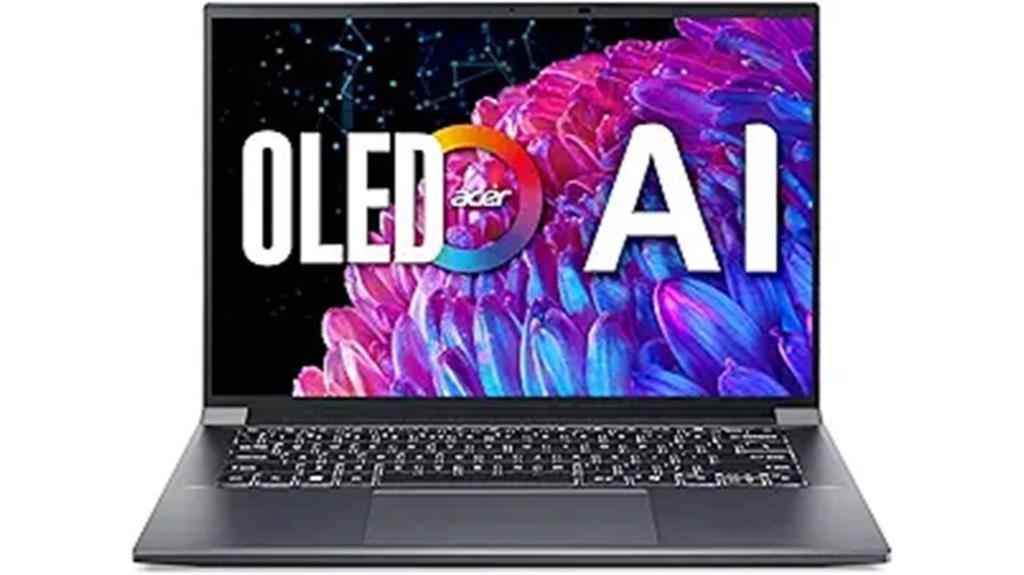
The Acer Swift X 14 Laptop (SFX14-72G-77NJ) stands out as an exceptional choice for programming students who demand powerful performance and versatility. With its Intel Core Ultra 7 processor and NVIDIA GeForce RTX 4060 GPU, you’ll run graphically intensive software effortlessly. The stunning 14.5-inch OLED display offers vibrant visuals and reduced eye strain. Plus, AI features streamline your multitasking, thanks to the dedicated Copilot Key. You’ll enjoy fast performance with 16GB of memory and a 1TB SSD, ensuring you can tackle any project. Connectivity is seamless with Wi-Fi 6E and Bluetooth 5.3, making collaboration easy.
Best For: Programming students and creators seeking powerful performance and versatility in a compact laptop.
Pros:
- High-performance hardware with Intel Core Ultra 7 processor and NVIDIA GeForce RTX 4060 GPU enables seamless execution of graphically intensive software.
- Stunning 14.5-inch OLED display offers vibrant colors and reduces eye strain, enhancing the overall viewing experience.
- Advanced AI features and dedicated Copilot Key streamline multitasking, making it easier to manage various tasks efficiently.
Cons:
- Limited upgradeability due to soldered RAM, which may restrict future enhancements for some users.
- Compact design may lead to limited port selection, potentially requiring additional adapters for certain peripherals.
- Higher price point compared to entry-level laptops, which may not be justified for casual users or basic tasks.
Apple 2025 MacBook Air 15-inch Laptop with M4 chip
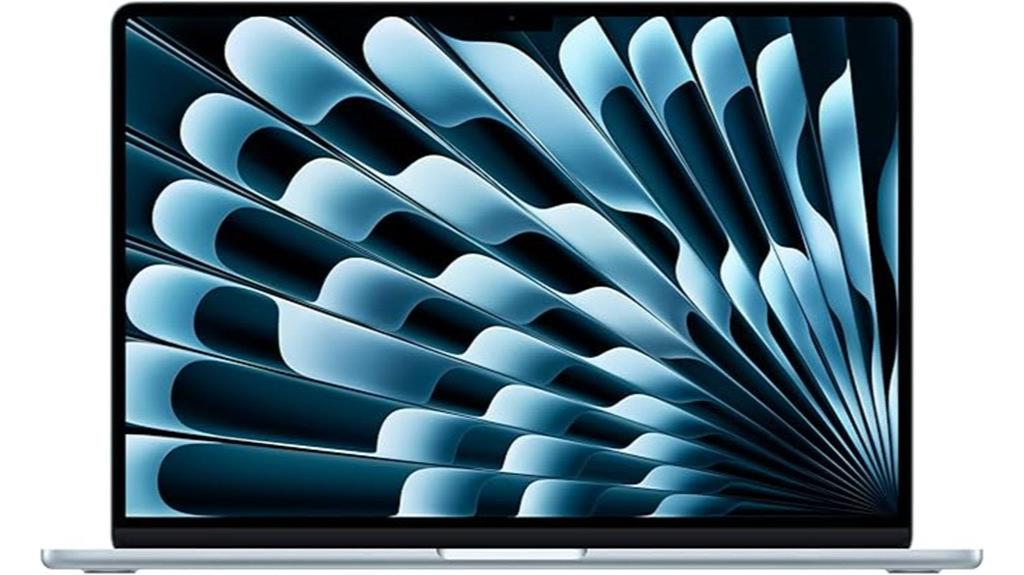
For programming students seeking a reliable and powerful machine, the Apple 2025 MacBook Air 15-inch with the M4 chip stands out as an exceptional choice. Its impressive performance ensures smooth multitasking and handles video editing and gaming effortlessly. With up to 18 hours of battery life, you can work uninterrupted whether plugged in or on the go. The 15.3-inch Liquid Retina display offers vibrant colors and sharp details, making your coding environment visually appealing. Plus, the advanced camera and audio system enhance virtual meetings. With robust connectivity options, this MacBook Air is designed to support your programming journey effectively.
Best For: Programming students seeking a reliable and powerful machine for coding, video editing, and gaming.
Pros:
- Exceptional performance with the M4 chip for seamless multitasking and fluidity.
- Stunning 15.3-inch Liquid Retina display that enhances visual clarity and detail.
- Long battery life of up to 18 hours, perfect for working on the go without interruptions.
Cons:
- Higher price point compared to some other laptops in the market.
- Limited upgrade options for RAM and storage after purchase.
- Two Thunderbolt ports may not be sufficient for users with multiple peripherals.
ASUS Vivobook S 14 OLED Slim Laptop (M5406WA-DS76)
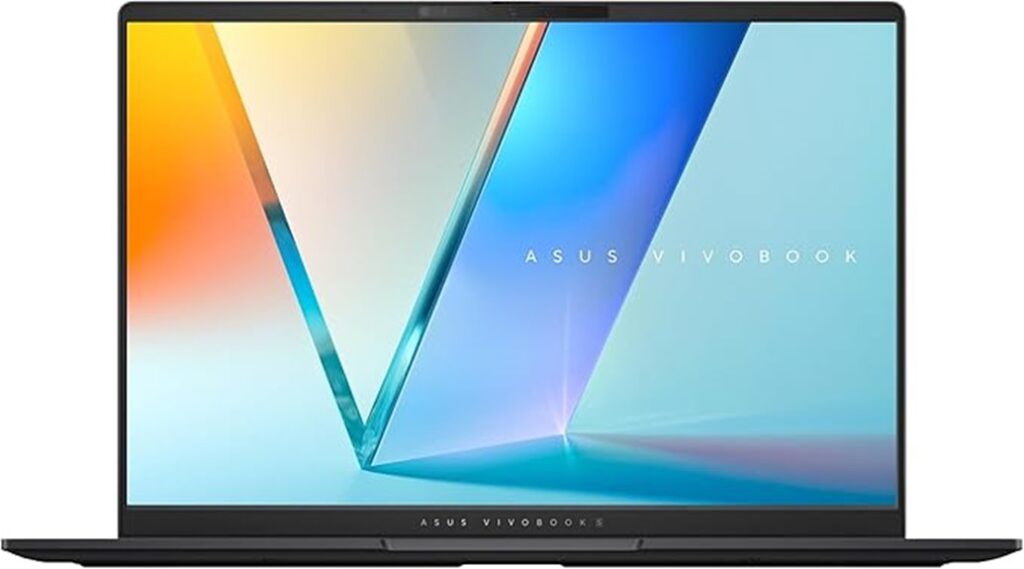
Programming students looking for a powerful and portable machine will find the ASUS Vivobook S 14 OLED Slim Laptop (M5406WA-DS76) an ideal companion. Powered by an AMD Ryzen 9 365 processor and 24GB of RAM, it handles demanding coding tasks with ease. The stunning 14” 3K OLED display offers vibrant colors and sharp details, perfect for long hours of coding. At just 2.87 lbs and 0.63” thick, it’s easy to carry around campus. Plus, the customizable RGB backlit keyboard enhances your typing experience. With ample connectivity options, this laptop keeps you connected and productive wherever you go.
Best For: Programming students seeking a powerful, portable laptop for demanding coding tasks and exceptional display quality.
Pros:
- High Performance: Equipped with an AMD Ryzen 9 365 processor and 24GB RAM, ensuring smooth multitasking and efficient processing.
- Stunning Display: The 14” 3K OLED screen provides vibrant colors and sharp details, enhancing the coding experience.
- Lightweight and Portable: Weighing only 2.87 lbs and with a slim profile, it’s easy to carry around campus.
Cons:
- Limited Storage: The 512GB SSD may not be sufficient for users with extensive software and file storage needs.
- Price Point: Higher-end specifications may come with a premium price, which could be a consideration for budget-conscious students.
- Battery Life: High-performance components and a bright display may impact overall battery longevity during intensive use.
Samsung Galaxy Book4 Pro Business Laptop (NP944XGK-KG4US)
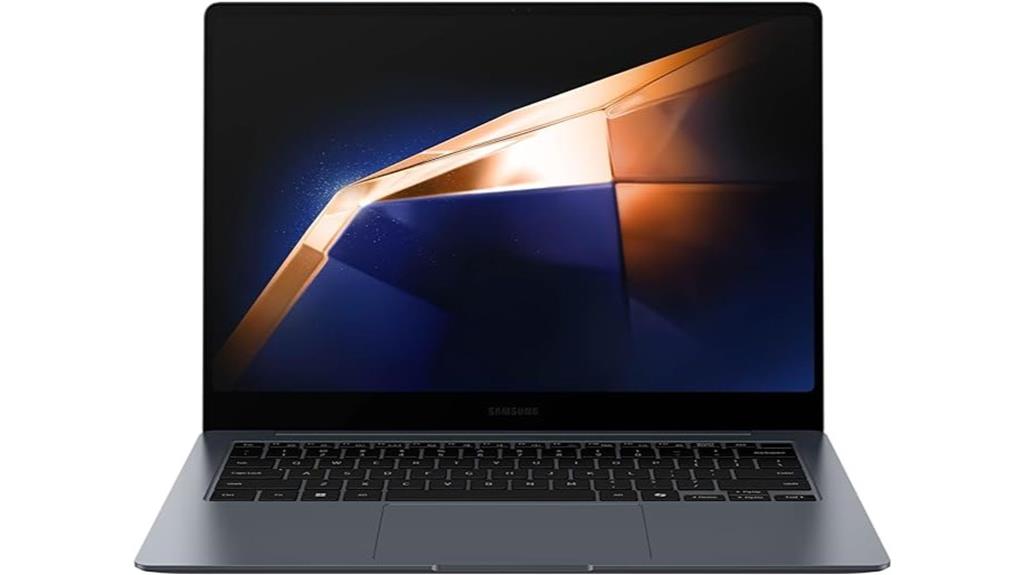
Designed with powerful performance in mind, the Samsung Galaxy Book4 Pro is an excellent choice for programming students who need a reliable laptop for multitasking and coding. With an Intel Core Ultra 7 processor and 32GB of RAM, it handles demanding tasks effortlessly. The stunning 14-inch 3K AMOLED touchscreen offers vibrant visuals, while the lightweight design makes it easy to carry around. You’ll appreciate its fast charging capability and 8-hour battery life, ideal for long study sessions. Plus, with multiple ports, you can easily connect to various devices, ensuring seamless productivity wherever you go.
Best For: Programming students and professionals seeking a powerful, portable laptop for multitasking and coding.
Pros:
- Exceptional performance with Intel Core Ultra 7 processor and 32GB RAM for demanding tasks.
- Stunning 14-inch 3K AMOLED touchscreen delivers vibrant visuals and an immersive experience.
- Lightweight design and fast charging capability make it ideal for on-the-go productivity.
Cons:
- High retail price ($1749) compared to competitors with similar specifications.
- Limited RAM upgrade options in certain regions, capping at 16GB.
- OEM SSD perceived as low quality for the premium price point.
ALSO READ: Best Laptop for Genealogy Research, Best Laptop for Freelancers , Best Laptops for Movies, Best Laptop for Excel Modeling, Best Laptop for Webcam Modeling, Best Laptops for Coding and Programming, Best Laptop for Architect, Best Laptop for Chemical Engineering Students, Best Laptop for Drone Mapping, Best Laptop for Automotive Programming
Factors to Consider When Choosing the Best Laptop for Programming Student
When choosing a laptop for your programming studies, you need to consider several key factors. Processing power, display quality, battery life, portability, and connectivity options all play a crucial role in your experience. Each of these elements can significantly impact your productivity and comfort while coding.
Processing Power Requirements
Choosing the right laptop for your programming studies involves considering several key factors related to processing power. First, prioritize laptops with multi-core processors, like 10-core CPUs, to handle multitasking effortlessly and run demanding applications simultaneously. Aim for a minimum of 16GB of unified memory for smooth performance while compiling code or using resource-heavy software. If you’re into graphic-intensive applications or game development, opt for laptops with dedicated GPUs, such as the NVIDIA RTX series. High-speed SSD storage, starting at 512GB, is essential to minimize load times and enhance system responsiveness. Lastly, don’t overlook battery life—look for laptops that offer at least 8-10 hours of usage to support long study sessions without constant recharging.
Display Quality Importance
A high-quality display can significantly enhance your programming experience, making it easier to read code and debug effectively. Look for laptops with high-resolution displays like 3K or Liquid Retina to ensure sharp text and clear visuals. Higher refresh rates, such as 120Hz, provide smoother scrolling, which can streamline your workflow. If you’re focused on design-oriented programming, prioritize color accuracy with features like 100% DCI-P3 gamut. Anti-reflective coatings and peak brightness above 600 nits help reduce eye strain and improve visibility during long coding sessions. Additionally, a larger screen size or a wider aspect ratio, like 16:10, allows for better multitasking, letting you view multiple windows side by side without sacrificing readability.
Battery Life Considerations
While programming, you don’t want to be tethered to a power outlet, so opting for a laptop with excellent battery life is crucial. Look for a device that offers at least 8 hours of battery life to keep you productive during long coding sessions. Ideally, a laptop with up to 18 hours of battery will enhance your convenience in classrooms or libraries. Fast charging capabilities can also minimize downtime, which is essential during busy schedules. Choose a laptop designed for multitasking with efficient power management, as this can further extend battery life. Lastly, evaluate battery performance under maximum load conditions to ensure consistent performance during complex programming tasks, helping you stay focused without interruptions.
Portability and Weight
When it comes to programming, portability and weight are essential factors to consider, especially since you’ll often find yourself working in different locations. Look for a laptop that weighs under 3 pounds for easy transport. A slim profile—ideally less than 0.7 inches thick—makes it simple to store in your backpack. Aim for a battery life that exceeds 8 hours, allowing you to power through long study sessions without hunting for outlets. Additionally, choose a durable design to withstand the daily wear and tear of moving your laptop around. Lastly, a screen size between 14 to 15 inches strikes the right balance between usability and portability, providing enough workspace for coding while remaining manageable to carry.
Connectivity Options Available
Choosing the right connectivity options is crucial for programming students, as you’ll often need to connect various devices and peripherals. Look for laptops with multiple USB ports, especially USB Type-C, to ensure efficient connections. Thunderbolt 4 ports are a great addition, offering high-speed data transfer and the ability to connect multiple external displays, boosting your productivity. A microSD card reader is also handy for quick file transfers and additional storage for your projects. Don’t forget to check for HDMI or DisplayPort outputs; these will allow you to connect to external monitors, enhancing your multitasking capabilities. Lastly, Wi-Fi 6E support ensures faster wireless connectivity, essential for cloud-based development and collaboration on projects.
Operating System Compatibility
Selecting a laptop that aligns with your programming needs hinges on the operating system compatibility with your preferred development tools and languages. If you’re developing for iOS or macOS, macOS is often the best choice, as it’s Unix-based and supports languages like Swift and Objective-C. On the other hand, Windows offers broad compatibility with various programming languages and tools, making it versatile for different development environments. If you’re focused on server-side programming or scripting, consider Linux for its open-source nature and strong community support. Additionally, ensure your laptop’s OS supports virtualization or containerization tools, like Docker or VirtualBox, especially if you plan to work across different operating systems. Choose wisely to streamline your coding experience!
Frequently Asked Questions
What Operating Systems Are Best for Programming Students?
When choosing an operating system for programming, you’ll find Windows, macOS, and Linux all offer unique advantages. It depends on your preferences and the specific programming languages or tools you plan to use.
How Much RAM Is Ideal for Coding Tasks?
For coding tasks, you’ll want at least 16GB of RAM. It allows you to run multiple applications smoothly, handle large projects, and ensures your system won’t lag during intensive coding sessions. More RAM is always better!
Are Touchscreen Laptops Good for Programming?
Touchscreen laptops can be useful for programming, especially for tasks like drawing or designing. However, they might not be as efficient for coding compared to traditional keyboards, so it depends on your personal preference and workflow.
Should I Prioritize Battery Life or Performance?
When choosing between battery life and performance, it depends on your needs. If you’re often on the go, prioritize battery life. However, for heavy tasks, performance might be more crucial. Balance both for the best experience.
Can I Run Virtual Machines on These Laptops?
Yes, you can run virtual machines on these laptops. They offer enough processing power and memory, making multitasking seamless. Just ensure you choose a model with a decent CPU and sufficient RAM for optimal performance.
My Final Opinion
In conclusion, choosing the right laptop is crucial for your success as a programming student. Whether you opt for the powerful Apple MacBook Pro or the sleek Acer Swift X, each option offers unique strengths to support your coding journey. Consider factors like performance, portability, and battery life to find the perfect fit for your needs. With the right device in hand, you’ll be well-equipped to tackle any programming challenge that comes your way. Happy coding!
